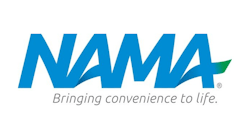Government Attorney Explains New Accessibility Rules For Vending Machines At National Automatic Merchandising Association OneShow
Vending operators serving "public entities," meaning government locations and locations accessible to the public, must meet new reach requirements beginning March 15, 2012, under the Americans with Disabilities Act (ADA).
Barbara Elkin, attorney-advisor at the U.S. Department of Justice, explained the new requirements during the government affairs symposium at the National Automatic Merchandising Association (NAMA) OneShow in Chicago.
The regulations establish side reach regulations requiring that all operable parts be no higher than 48 inches and no lower than 15 inches. This differs from the 1991 standards which have controls at 54 inches high and nine inches low.
Elkin noted that it is the vending operators, not the equipment manufacturers, who are responsible for meeting the requirements.
The length of the reach is the main change under the new rules, Elkin noted. "An awful lot of this has not changed" since 1991, she said.
The machine must be easily accessible for persons in wheelchairs.
Operators do not have to replace existing machines with compliant machines at a location unless the location undergoes an alteration. If the location is not upgraded, changed or renovated, there is no need to install new equipment.
In addition, a machine will have to be made compliant if it is altered. A machine is considered altered if the payment mechanism is changed. Normal maintenance to mechanical or electrical systems are not considered alterations, Elkin said.
If an operator has a bank of equipment selling the same products, only one machine in the bank must comply with the rules, Elkin said. If each of the machines are selling different products, then all must comply.
For buildings with machines on different floors, Elkin said the requirements will apply for any machine that serves a different group of consumers in the building.
Elkin said it has not been determined if the accessibility requirements will apply to communication elements on vending machines such as videoscreens. "That may be coming," she said. "Increasingly, we're seeing machines that can do everything."
NAMA has argued that the rules should not apply to vending machines that are not fixed into building since the ADA requirements state they apply only to fixed equipment.
NAMA has submitted comments to the Department of Justice (DOJ) arguing that the ADA requirements do not apply to moveable and non-fixed vending machines. However, until a specific exemption is allowed for vending, NAMA urges operators to meet the requirements.
According to the material Elkin provided at the symposium, if a machine is freestanding, it must still be accessible to persons with disabilities. "Freestanding machines should be made accessible to the maximum extent feasible," the material notes. "DOJ recommends that the ADA Standards be used as a guide for these machines as well."
Elkin said freestanding equipment must nonetheless meet the requirements.






